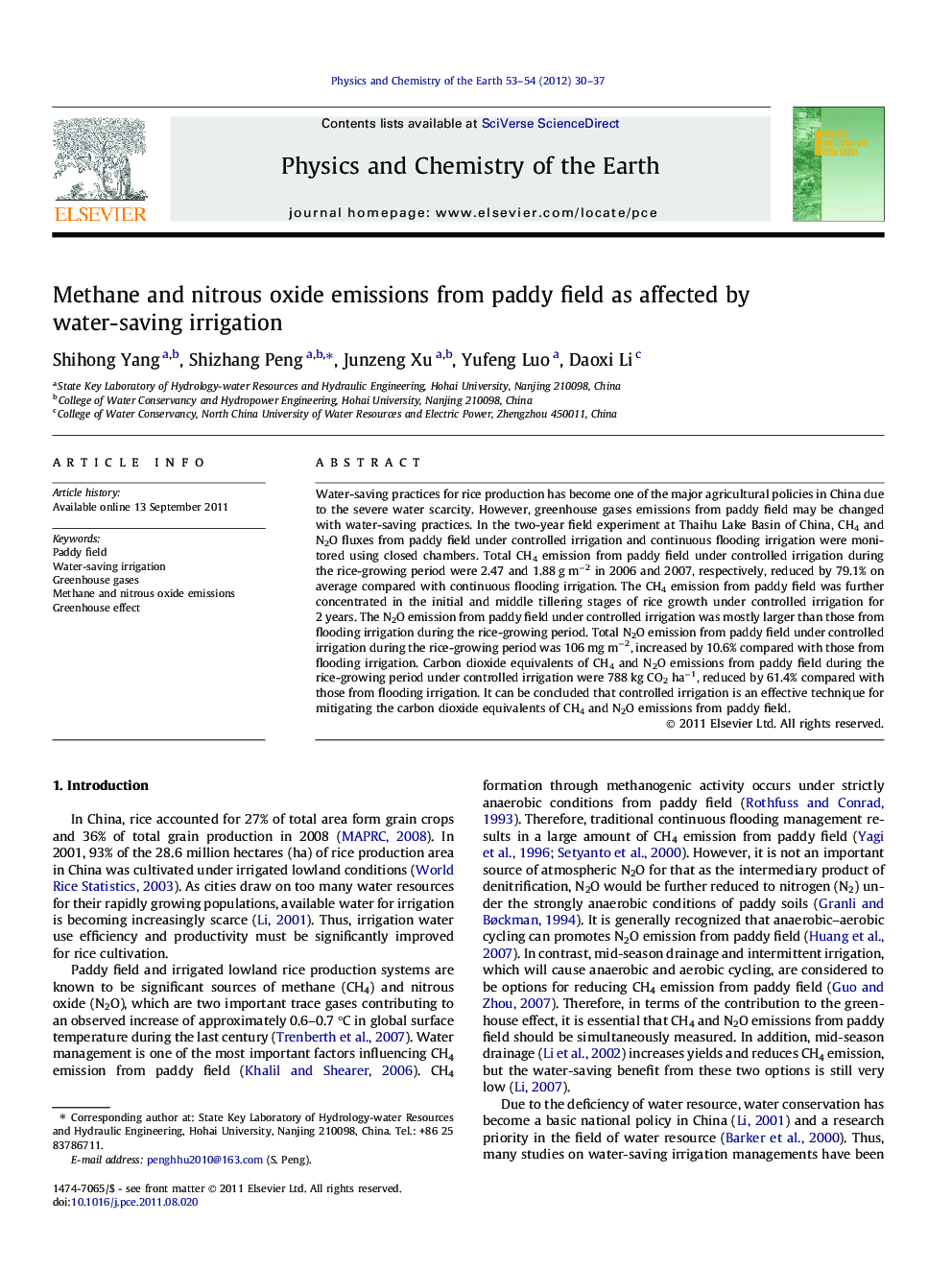| Article ID | Journal | Published Year | Pages | File Type |
|---|---|---|---|---|
| 4721080 | Physics and Chemistry of the Earth, Parts A/B/C | 2012 | 8 Pages |
Water-saving practices for rice production has become one of the major agricultural policies in China due to the severe water scarcity. However, greenhouse gases emissions from paddy field may be changed with water-saving practices. In the two-year field experiment at Thaihu Lake Basin of China, CH4 and N2O fluxes from paddy field under controlled irrigation and continuous flooding irrigation were monitored using closed chambers. Total CH4 emission from paddy field under controlled irrigation during the rice-growing period were 2.47 and 1.88 g m−2 in 2006 and 2007, respectively, reduced by 79.1% on average compared with continuous flooding irrigation. The CH4 emission from paddy field was further concentrated in the initial and middle tillering stages of rice growth under controlled irrigation for 2 years. The N2O emission from paddy field under controlled irrigation was mostly larger than those from flooding irrigation during the rice-growing period. Total N2O emission from paddy field under controlled irrigation during the rice-growing period was 106 mg m−2, increased by 10.6% compared with those from flooding irrigation. Carbon dioxide equivalents of CH4 and N2O emissions from paddy field during the rice-growing period under controlled irrigation were 788 kg CO2 ha−1, reduced by 61.4% compared with those from flooding irrigation. It can be concluded that controlled irrigation is an effective technique for mitigating the carbon dioxide equivalents of CH4 and N2O emissions from paddy field.
► We examine N2O emission from paddy field under non-flooding controlled irrigation. ► Controlled irrigation effectively decreases CH4 emission from paddy field. ► Wet-dry cycle is the reason for the changes of CH4 and N2O emission from paddy field. ► Controlled irrigation mitigates carbon dioxide equivalents from paddy field.
